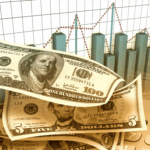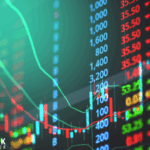Recent data highlights the persistent strength of consumer spending in driving the U.S. economy. This sector has long been a critical component, acting as the primary engine of economic expansion. Its consistent performance reassures stakeholders of the economy’s potential for sustained growth. Beyond temporary fluctuations, consumer behavior remains a pivotal force in shaping economic outcomes, providing a solid bedrock upon which other economic activities can build. This resilience suggests that despite challenges, consumer spending will continue to play a central role in economic dynamics.
According to the Bureau of Economic Analysis, the U.S.’s real GDP in the second quarter grew by 3.3%, an upward revision from previous estimates. This increase indicated recovery from a minor decline in the first quarter. Historical trends often demonstrate the cyclical nature of GDP, yet the consistent rise in consumer confidence reveals an economy more stable than in past erratic cycles. The robust growth observed this quarter contrasts with the preceding periods of sluggishness, further emphasizing the strong rebound facilitated by spending.
How Did Consumer Spending Influence GDP?
The rise in consumer spending, coupled with a downturn in imports, largely contributed to the GDP growth. Although investments and exports witnessed declines, the domestic market’s consumption patterns counterbalanced these reductions. Real final sales to private domestic purchasers saw a marked increase, showcasing the interplay between consumer expenditure and private investment as critical elements of economic gain.
What’s the Impact on Consumer Costs?
The price index for gross domestic purchases climbed modestly, while the personal consumption expenditure (PCE) index rose similarly. Despite potential concerns about inflation, spending growth outpaced these inflationary measures, indicating that consumer purchasing power remains resilient. The steady rise in goods, particularly pharmaceuticals, alongside services like healthcare and accommodations, illustrates a varied and broad-based consumer confidence boost.
Real gross domestic income (GDI) followed the encouraging trajectory, registering significant growth in the second quarter. The average of real GDP and GDI together further bolstered views of economic recovery, contrasting with minor contractions experienced earlier this year. Synchronization between these metrics provides a more comprehensive picture of income and production trends.
Consumer trends show potential continuity into the third quarter, driven by activities like back-to-school spending, which are traditionally immune to economic slumps. The continued strength owes much to such activities that propel consumer-led growth. Economic analyses suggest that, despite tariffs and potential cost increases, consumers might remain undeterred in maintaining expenditure levels.
Retail giants like Walmart highlight consumer behavior trends as indicative of broader economic shifts. Doug McMillon, Walmart’s CEO, noted,
“Spending by U.S. consumers has been generally consistent…We aren’t seeing dramatic shifts.”
This consistency ties into the observed economic stability, further echoed by McMillon when stating
“… we see more adjustments in middle- and lower-income households than… higher-income households.”
Price changes have ushered in shifts in consumer choice, reflecting adaptive spending habits.
The current levels of consumer spending underline a pivotal role in economic health. As the economy faces varied pressures, understanding its dynamics becomes essential. Consumer confidence, tempered by real income gains and responsive purchasing habits, stands to continually shape outcomes. Watching these trends prove invaluable in anticipating economic directions and planning strategic responses to unfolding situations.










